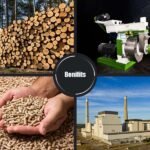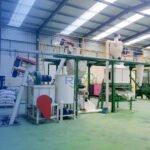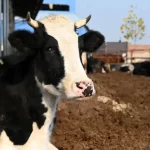Wood Chip Dryers vs. Traditional Dryers: Key Differences Explained
In the wood processing sector, drying is an essential phase that significantly affects the quality and usability of the final product. Two prevalent types of dryers employed in this process…
Utilizing Biomass Materials in Chemical Fertilizer Pellet Production
While biomass materials are commonly associated with organic fertilizer production, many can also play a significant role in the manufacture of chemical fertilizer pellets. This article examines the different types…
Essential Components of Biomass Pellet Presses That Require Regular Inspection and Replacement
Biomass pellet presses play a vital role in the production of renewable energy pellets from a variety of organic materials, including wood, agricultural residues, and energy crops. These machines convert…
Optimizing the Configuration of Biomass Pellet Production Machinery
Biomass pellet production machinery is a crucial component of the renewable energy industry, transforming various biomass materials into high-density pellets used for energy generation, animal feed, and other applications. To…
How to Choose a Straw Pellet Production Line Manufacturer?
Straw pellets are gaining significant attention as a sustainable and renewable energy source. Produced from straw, a byproduct of agricultural activities, these pellets offer multiple advantages, from being an environmentally…
Equipment Cost Advantages of a 10-15t/h Cattle Feed Production Line Compared to Small Feed Mills
The investment in a 10-15 tons per hour (t/h) cattle feed production line represents a significant step up from smaller feed mills. While the initial equipment costs are higher, this…
How Equipment Costs Affect Overall Production Efficiency in a 10t/h Poultry Feed Production Line
A 10 tons per hour (t/h) poultry feed production line represents a significant investment in the animal feed industry. The costs associated with the equipment used in such a production…
The Impact of Equipment Costs on Product Quality in a 20t/h Poultry Feed Plant
A 20 tons per hour (t/h) poultry feed plant represents a significant investment in the animal feed industry. The quality of equipment used in such a plant plays a crucial…
The Relationship Between Equipment Costs and Technical Automation in a 5t/h Fish Feed Production Line
In the aquaculture industry, the efficiency and quality of fish feed production play a crucial role in the success of fish farming operations. A 5 tons per hour (t/h) fish…
Autonomous Temperature Control in Goat Feed Pellet Making Machines
Goat feed pellet making machines have become increasingly sophisticated, incorporating advanced features to enhance efficiency and product quality. One crucial aspect of the pellet-making process is temperature control, which significantly…






